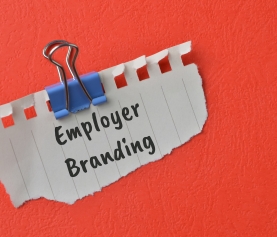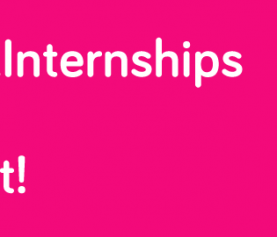Updated October, 2019
What is Employer Branding?
On the local market, the employer branding practice is a rather new concept for the HR community. Therefore, there are still a lot of questions and confusions in terms of process understanding and terminology. We’ve designed a series of articles that will provide HR and communication professionals with a great foundation on which to build and strengthen their organizations’ employer brand.
For all of you that might still wander why should they invest their resources in learning or developing employer branding strategies, here are some reasons for which we consider employer branding a must have on the HR professional’s agenda.
The pool of candidates is not getting any bigger. On the contrary, due to decreased birth rate, along with a decreasing number of enrolled students either for higher education or vocational studies, we are facing a cut down on available talent. Increased competition is also fuelled by higher no of employers and career opportunities. This trend was also spotted by our research, the Most Desired Employers Survey: if in 2010, a candidate would take into consideration 4 employers for their next career opportunity, in 2016 the list was comprised of 13 employers. Nowadays not only the employer chooses the best candidate, but also the candidate gets to choose his/hers next employer.
But let’s start with the basics – the definition of the key terms related to employer branding:
Employer Branding versus Employer Brand
Employer branding is a continuous and long term effort to promote a company, or an organization as an employer of choice in order to attract, recruit and retain the right talent. The key elements of a successful employer branding strategy are a strong Employer Value Propositions (detailed bellow), a good creative and communication strategy and continuous performance measurement. In terms of who is finally responsible for this endeavor, some say HR, others say Marketing or General Management but at the end of the day it is the responsibility of the entire organisation.
Brett Minchington defines the employer brand as the perception upon your organisation as a “great place to work”. It represents the sum of thoughts and feelings that people associate with an employer, both positive and negative. Each company has an employer brand, even if they don’t have any activities designed to influence it (employer branding activities). They are many factors that can influence it, most of them reflecting current and previous employee experiences.
Employer Brand doesn’t represent only the logo and all the rules how to use it. It can be the responsibility of HR or Marketing,
Employer Branding Campaigns versus Recruitment Campaigns
We know how important it is to find the right people for all your vacancies, but at the same time we know how complex is the decision process of your potential candidates and what role plays your employer brand.
The Employer Branding campaign has long term objectives, focused on communicating your company’s unique value – your promise of employee experience for your target audience. A Recruitment campaign is focused on promoting a specific career opportunity within your company. This type of activity has short term impact and is focused on generating recruitment leads for your job opening.
[Eg. Employer branding campaign]: GE has a great Employer Branding Campaign, that presents the diversity of opportunities that the company has to offer. As they were perceived as an industrial company which made candidates associate them with low-skilledmanufacturing jobs, GE wanted to reposition as a highly technical organization. Their series of short videos “What’s the Matter with Owen?” show Owen, a recent college graduate trying to share his excitement among family and friends about his new job at GE.
[Eg Recruitment campaign]: When opening a new Mega Store in Australia, IKEA chose a creative and cost efficient recruitment campaign. A “Career instructions” brochure was place inside each of the company’s flat-pack product boxes. When customers opened their IKEA products boxes, they also found all the instructions for “assembling” a career within IKEA. In terms of results, 4,285 quality applications were received that resulted in 280 new hires.
We are not saying that one is better than the other. Just keep in mind that it’s very important to see the difference between these two types of campaigns and their impact. Do not neglect your short term needs, but also include in your HR strategy long term initiatives to strengthen your employer brand.
To influence the employer brand perception, you need a strong Employer Value Proposition based on the main things that define the employee experience you offer.
What is the Employer Value Proposition (EVP)?
• Your promise as an employer. The EVP defines the key attributes that you would like people to associate with you as a potential employer. The selling points should be attractive and credible for your target audience, true for actual employee, distinct from your competitor’s and sustainable – aligned with management’s vision and goals.
• EVP balances ‘fit for business’ with ‘fit for talent’. Most of the EVPs focus on 3-5 core pillars (attributes), which are defined after an extended external and internal research.
The core of EVP is defined after analyzing three categories of content:
a. The image perceived by the talent target group (What people think your company is like?),
b. The perception of the current employee about the company (What employees think your company is like?)
c. The vision of the top management team (What your management would like your company to be?).
• Platform for brand communication. The principal role of the EVP is to provide a consistent platform for employer brand communication and candidate experience management.
What is NOT the Employer Value Proposition?
• The EVP is not a tag line or a creative campaign (poster, flyer, or movie). The EVP defines what you want to communicate, while the creative expression defines how you want to communicate the EVP. The choice of copy, visual expression and channels will depend on your target group and might vary across countries.
• The EVP is not designed only for one target group. The EVP reflects the promise that the company has for all current and potential employees, and it’s available for minimum of 3-5 years.
• It’s not a communication campaign. The EVPs are designed like an umbrella for all internal and external forms of employer brand communication. It’s not focused only on recruitment messages, but designed to influence the decision of choosing an employer.
• EVPs are not the mission or the values of the company. These are reflecting the purpose of the business and are part of your company’s corporate brand. Nonetheless, there is a strong connection between a company’s brand and its employer brand, but they are not the same.
The employer branding process is very complex. Therefore, we invite you to subscribe to our newsletter and continue to follow our blog as more articles will come on this subject.
Also, if you want to set a meeting to discuss further on how we can help you in defining your employer brand strategy, please send a message at angajatori@catalyst.ro








